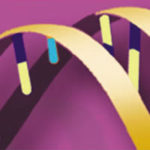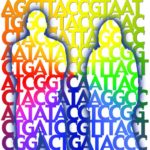Mutations in 115-Year-Old Provide Perspective for Personal Genome Sequencing

Normally, I wouldn’t post about a report that’s already reverberated through the blogosphere, but the finding of hundreds of mutations in the blood of a 115-year-old woman reminded me of something I’d published a few years ago. In an actual journal. And at least in the accounts I read, no one linked the finding to mutation detection in clinical genome sequencing.
STEM CELLS FROM OLD TEETH
In 2008, Renad I. Zhdanov, a researcher at the Institute of Fundamental Medicine and Biology at the Russian Academy of Sciences, started emailing me, about stem cells. I’d just published a tome for Insight Pharma Reports and a highly forgettable novel on the topic.
 Dr. Zhdanov had the idea to use stem cells from the teeth of the oldest old to create spare parts for others. Presumably the cells, having hung around for more than a century, would have exceptional potential. When our discussion veered toward the concept of informed consent — yanking teeth from unsuspecting elders — I realized we could write an editorial for the American Journal of Bioethics, where I had a contact. And so “Centenarians as Stem Cell Donors” appeared in the November 2009 issue. It is, unfortunately, behind a paywall.
Dr. Zhdanov had the idea to use stem cells from the teeth of the oldest old to create spare parts for others. Presumably the cells, having hung around for more than a century, would have exceptional potential. When our discussion veered toward the concept of informed consent — yanking teeth from unsuspecting elders — I realized we could write an editorial for the American Journal of Bioethics, where I had a contact. And so “Centenarians as Stem Cell Donors” appeared in the November 2009 issue. It is, unfortunately, behind a paywall.
Although our article was more whimsical than serious science, we did traipse through the brief history of dental stem cells. NIH researcher Masako Miura discovered them in his 6-year-old’s mouth in 2003, which inspired the spawning of tooth banks, for where there’s a new stem cell, a new company is sure to follow. But saving your kid’s teeth in a jar is just as effective, as my post two weeks ago pointed out for the posthumous diagnosis of Rett syndrome.
HENNY’S 115-YEAR-OLD BLOOD CELLS

The paper in last week’s Genome Research probed a different part of a very old person’s person – the blood cell compartment. It harbors cells that divide frequently and therefore would be most likely to have accumulated lots of mutations, which mostly happen during DNA replication.
Subject “W115,” aka Hendrikje van Andel-Schipper (“Henny”), was born on June 29, 1890 and died on August 30, 2005, living 115 years and 62 days. She was a supercentenarian, older than 110. Currently 72 supercentenarians live in the world, all but 4 of them female. The US has 23. Moses (from the bible, not Gwyneth Paltrow and Chris Martin’s son), who lived to 120, was one.
Despite having had two cancers, Henny never had chemo, and so she was in a sense a mutational virgin. The genetic changes were presumably spontaneous. She spent her final years in a nursing home but was healthy and alert, if frail, to the end. A few days before her death she reportedly told the home’s director, “It’s been nice, but the man upstairs says it’s time to go.”

Henny attributed her remarkable longevity to consuming daily herring and orange juice. And the list of conditions she didn’t have was long. Her autopsy revealed no plaques and tangles in her brain, no clogged arteries.
Henne Holstege, PhD, and her colleagues at Vrije University Medical Center in Amsterdam performed whole genome sequencing on white blood cells and brain neurons from Henny’s autopsy. “We compared the genome of peripheral blood cells, derived from hematopoietic stem cells which have experienced many divisions, with the genome of brain cells, which rarely divide after birth. We expected to find mutations in the blood genome but not in the brain genome, and we wanted to assess the type and sites of the mutations,” she wrote in an email. The NIH Director’s Blog explains the connection between Henne and Henny.
RIDDLED WITH MUTATIONS
Henny’s white blood cells had some 450 mutations, including 424 single base changes and 22 insertion-deletions (indels), all in nonrepeats. No mutations were found in the brain neurons, nor in the cells of the breast tumor that had been removed when she was 100, nor in the stomach tumor that killed her when it spread.
Even though the mutations weren’t in repeats, they weren’t important enough to have impacted Henny’s survival or health, or so it seems. The mutations were more likely where methyl groups cling to the DNA because it is rich in cytosines and guanines – the “CpG islands” that signify a gene’s beginning and indicate a gene expression pattern more like a stem cell than a specialized cell.
Most of the mutations were not in parts of proteins that algorithms predict would be catastrophic. Nor did they show up in compendiums of cancer mutations (COSMIC) or in the Human Gene Mutation Database. None partook of leukemias, although Henny’s blood cells had variants in some scary cancer genes associated with faulty DNA repair – BRCA1 and 2, RAD50 — but these deviations aren’t associated with disease.
Henny, it appears, was genetically lucky. But the results are also intriguing on the cellular level.
STEM CELL EXHAUSTION

White blood cells descend from hematopoietic stem cells (HSCs) from the bone marrow. Mutations happen more in HSCs than in quiescent cells like brain neurons because stem cells divide. They don’t “turn into” anything as the media often oversimplify.
HSCs are the mother cells that top the charts of blood cell lineages that festoon stem cell labs. An adult’s bone marrow has about 11,000 of these plastic cells that can divide to eventually yield almost anything, with about 1,300 HSCs awake enough at any one time to be generating white blood cells, according to a recent study.
Amazingly, most of the mutations in Henny’s blood represent only two active HSCs, one of which was likely the daughter of the other. “The mutations occurred at such frequencies in the peripheral blood that the majority of the blood cells could only be derived from two active hematopoietic stem cells. At first we did not believe that this could be true, but after careful examination there was no other conclusion that we could draw. We speculate that the number of active stem cells may decrease during aging, to the extent that in W115, only two stem cells were active,” Dr. Holstege wrote. Someone did some math and deduced a spontaneous mutation rate of one about every three cell divisions.
Not as surprising, the telomeres (tips) of the chromosomes in the white blood cells were 17 times shorter than the ones from brain cells. Altogether, the scenario suggests what the researchers call “stem cell exhaustion.” Henny had depleted nearly all of her HSCs.
GENETICS IN CONTEXT – WE ALL HAVE MUTATIONS
Mutations are generally regarded as bad. I’ve covered several on this blog, from the curious genetics of werewolves to homeotic mutations that turn arms into legs to the sad tales of neurologic disease and hereditary blindness.
But some mutations are good. Perhaps the best is the CCR5 mutation that keeps HIV out of our cells, a genetic glitch that drugs and gene therapy are trying to imitate. Most mutations, it seems, are neither evil nor beneficial, but neutral. After all, Henny lived in good health for 115 years, yet her blood cells still accrued 450 mutations.
DNA Science blog always tries to find a different perspective to genetics news, and for the case of Henny, it is the fact that mutations need not signal doom. Dr. Holstege had the idea to look at Henny’s genome because of the role of somatic mutations in causing cancer. But another view is that many mutations do nothing at all.
Neutral mutations will impact the application of DNA sequencing in health care decision-making. The Nature article featured in last week’s post, “Guidelines for Investigating Causality of Sequence Variants in Human Disease,” for example, outlines how clinical researchers should rank mutations, in terms of the extent of the danger they pose to health or perpetuation of the species. But this week’s paper on mutations in the healthy 115-year-old reiterates that some mutations may have no effect at all. That’s why genome annotation of all possible gene variants and deciphering gene-gene interactions are so important for applying genome information.
As far as mutations go, clearly we’ll have to figure out what’s normal. Results from Henny suggest that to some extent we can embrace our mutations – they are simply a consequence of the changeable nature of DNA. And that is, ultimately, how life began and has evolved.
ORPHAN BLACK: REQUEST TO READERS
I’ve just started catching up on Orphan Black, the BBC show about a young woman and her many clones. How were the clones created? Yes, I’m searching for scientific gaffs. Wikipedia says by in vitro fertilization, which makes no sense given meiosis mixing up gene combinations in gametes. I thought of dissolving an 8-celled embryo into 8 individuals, but Sarah already has at least 11 clones. Was it somatic cell nuclear transfer? Then somatic mutations would distinguish the clones. Am I missing something? I’d welcome a guest post on this show!


[…] Mutations in 115-Year-Old Provide Perspective for Personal Genome SequencingPLoS Blogs (blog)… Speakeasy Science […]
Sorry, can’t help about the show (don’t watch TV), but I just wanted to say that this was a fascinating article, thanks so much for posting. 450 mutations, that’s quite the number… but then again, so is 115 years!